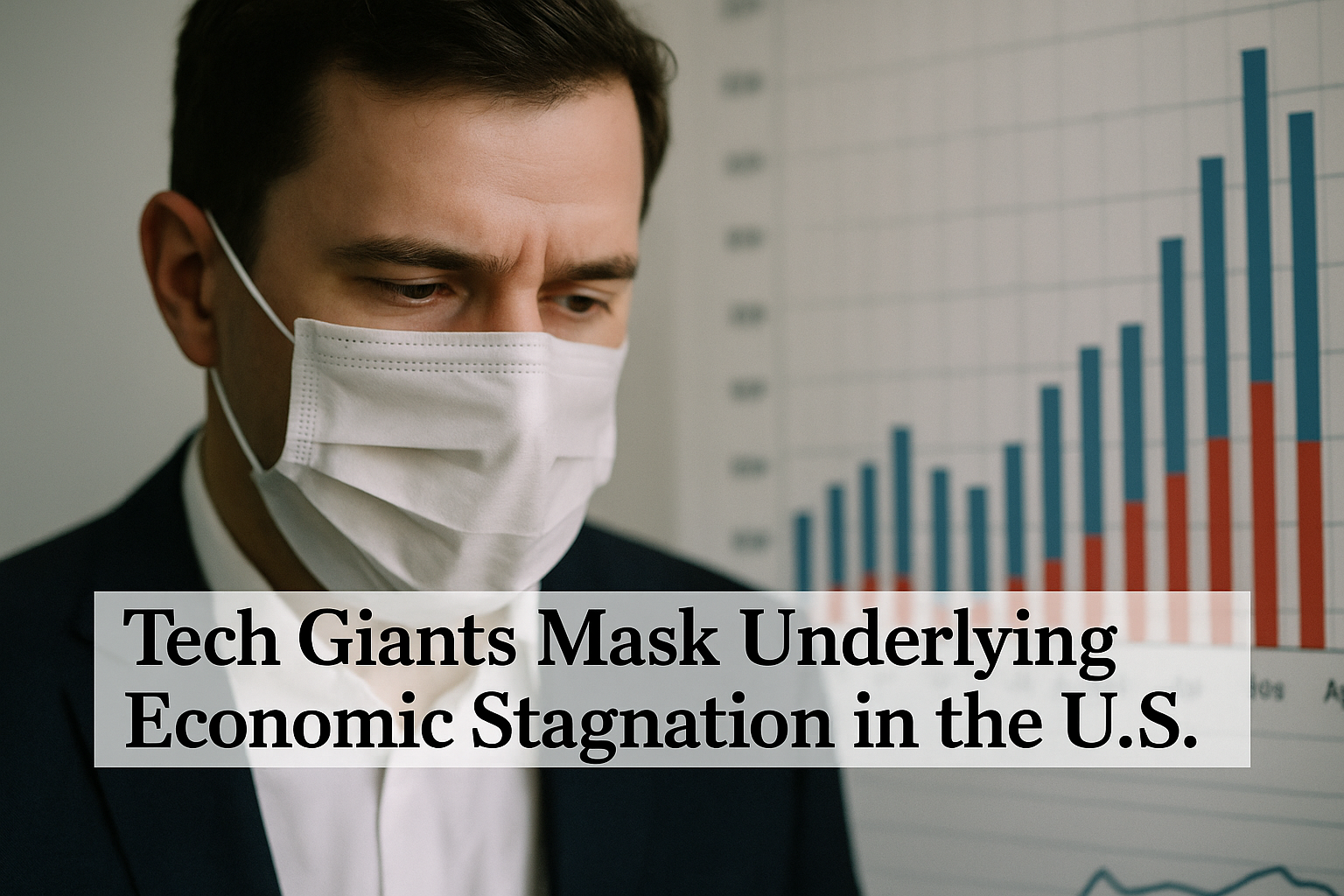
The U.S. economy is currently experiencing a surge, driven significantly by advancements and investments in the tech sector, particularly in artificial intelligence (AI). The stock market is thriving, with the S&P 500 achieving 15 record closing highs and the Nasdaq Composite reaching 17. Additionally, the country’s GDP is exceeding growth expectations. However, a deeper examination reveals that this prosperity is largely confined to a few tech giants, raising concerns about the broader economic picture.
Companies such as Nvidia, Amazon, Google, Tesla, Microsoft, Apple, and Meta, often referred to as the “magnificent seven,” are the primary drivers of this economic growth. A recent analysis highlighted that 26 percent of the S&P 500’s recent explosive growth is attributed to lavish spending on these tech behemoths. This concentration of growth is masking significant weaknesses in other sectors of the economy.
Outside the tech bubble, many sectors are facing challenges. The Financial Times reports that profits in industries like energy, consumer goods, financial markets, and raw materials are declining, despite their stock values continuing to rise. This discrepancy points to underlying economic stagnation that is not immediately apparent due to the overshadowing success of tech companies.
The current reliance on a small group of tech companies for economic growth poses potential risks. If these companies were to encounter downturns or face regulatory challenges, the impact on the overall economy could be significant. Such a scenario underscores the importance of diversifying growth sources to create a more balanced and resilient economic landscape.
Understanding these dynamics is crucial for accurately assessing the true health of the U.S. economy. While the tech sector’s achievements are noteworthy, they should not overshadow the need to address vulnerabilities and foster growth across a wider range of industries. By doing so, the economy can be better prepared for potential challenges and ensure sustainable prosperity.
Some content for this article was sourced from futurism.com.










